treosulfan
Synonym(s):(2S,3S)-Butanetetraol 1,4-dimesylate;(2S,3S)-Threitol 1,4-bismethanesulfonate;L-Threitol 1,4-bis(methanesulfonate);Threosulphan;Treosulphan
- CAS NO.:299-75-2
- Empirical Formula: C6H14O8S2
- Molecular Weight: 278.3
- MDL number: MFCD02258964
- EINECS: 206-081-0
- SAFETY DATA SHEET (SDS)
- Update Date: 2024-12-18 14:07:02
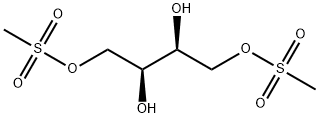
What is treosulfan?
The Uses of treosulfan
Treosulfan is used as myeloablative agent in conditioning regimen prior to allogeneic hematopoietic stem cell transplantation (HSCT)??. It can also be an effective agent for conditioning children with inborn errors of immunity (IEI).
Background
Treosulfan is under investigation in Allogeneic Haematopoietic Stem Cell Transplantation. Treosulfan has been investigated for the treatment of Lymphoblastic Leukemia, Acute, Childhood.
Definition
ChEBI: Treosulfan is a methanesulfonate ester.
General Description
Odorless white crystalline powder.
Air & Water Reactions
Water soluble. Slowly hydrolyzes: decomposes within 3 hours at pH 7.5 and 77°F. .
Fire Hazard
Flash point data for treosulfan are not available; however, treosulfan is probably combustible.
Clinical Use
Alkylating agent for ovarian cancer
Safety Profile
Confirmed carcinogen. Poison by intravenous route. Human mutation data reported. When heated to decomposition it emits toxic fumes of SOx.
Metabolism
Not Available
Metabolism
Treosulfan is a prodrug of a bifunctional alkylating agent, converted in vivo to epoxide compounds. Approximately 30
% of the substance is excreted unchanged in the urine within 24 hours, nearly 90
% of which is within the first 6 hours after administration.
Properties of treosulfan
| Melting point: | 76-78 °C |
| Boiling point: | 359.3°C (rough estimate) |
| Density | 1.305 (estimate) |
| refractive index | 1.5630 (estimate) |
| storage temp. | Store at -20°C |
| solubility | Acetone (Slightly), DMSO (Slightly), Methanol (Slightly), Water (Slightly) |
| pka | 12.36±0.20(Predicted) |
| form | Solid |
| color | Off-White to Pale Beige |
| CAS DataBase Reference | 299-75-2 |
| IARC | 1 (Vol. 26, Sup 7, 100A) 2012 |
| EPA Substance Registry System | Treosulfan (299-75-2) |
Safety information for treosulfan
| Signal word | Danger |
| Pictogram(s) |
 Health Hazard GHS08 |
| GHS Hazard Statements |
H340:Germ cell mutagenicity H350:Carcinogenicity |
| Precautionary Statement Codes |
P201:Obtain special instructions before use. P202:Do not handle until all safety precautions have been read and understood. P280:Wear protective gloves/protective clothing/eye protection/face protection. P308+P313:IF exposed or concerned: Get medical advice/attention. P405:Store locked up. P501:Dispose of contents/container to..… |
Computed Descriptors for treosulfan
New Products
Tert-butyl bis(2-chloroethyl)carbamate 4-Methylphenylacetic acid N-Boc-D-alaninol N-BOC-D/L-ALANINOL 3-Morpholino-1-(4-nitrophenyl)-5,6-dihydropyridin- 2(1H)-one Furan-2,5-Dicarboxylic Acid Tropic acid DIETHYL AMINOMALONATE HYDROCHLORIDE 1,1’-CARBONYLDIIMIDAZOLE R-2-BENZYLOXY PROPIONIC ACID 1,1’-CARBONYLDI (1,2-4 TRIAZOLE) N-METHYL INDAZOLE-3-CARBOXYLIC ACID (2-Hydroxyphenyl)acetonitrile 4-Bromopyrazole 5-BROMO-2CYANO PYRIDINE 5,6-Dimethoxyindanone 5-broMo-2-chloro-N-cyclopentylpyriMidin-4-aMine 2-(Cyanocyclohexyl)acetic acid 4-methoxy-3,5-dinitropyridine 2-aminopropyl benzoate hydrochloride 1-(4-(aminomethyl)benzyl)urea hydrochloride diethyl 2-(2-((tertbutoxycarbonyl)amino) ethyl)malonate tert-butyl 4- (ureidomethyl)benzylcarbamate Ethyl-2-chloro((4-methoxyphenyl)hydrazono)acetateRelated products of tetrahydrofuran
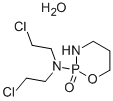

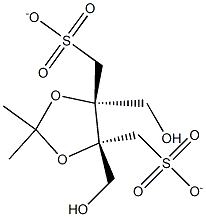

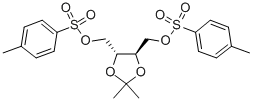
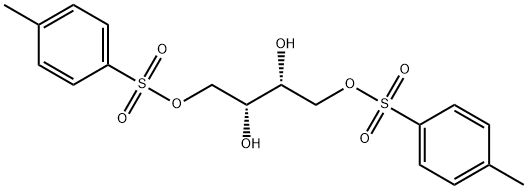
You may like
-
 Treosulfan CAS 299-75-2View Details
Treosulfan CAS 299-75-2View Details
299-75-2 -
 1975-50-4 98%View Details
1975-50-4 98%View Details
1975-50-4 -
 2-HYDROXY BENZYL ALCOHOL 98%View Details
2-HYDROXY BENZYL ALCOHOL 98%View Details
90-01-7 -
 2-Chloro-1,3-Bis(Dimethylamino)Trimethinium Hexafluorophosphate 221615-75-4 98%View Details
2-Chloro-1,3-Bis(Dimethylamino)Trimethinium Hexafluorophosphate 221615-75-4 98%View Details
221615-75-4 -
 61397-56-6 CIS BROMO BENZOATE 98%View Details
61397-56-6 CIS BROMO BENZOATE 98%View Details
61397-56-6 -
 14714-50-2 (2-Hydroxyphenyl)acetonitrile 98+View Details
14714-50-2 (2-Hydroxyphenyl)acetonitrile 98+View Details
14714-50-2 -
 118753-70-1 98+View Details
118753-70-1 98+View Details
118753-70-1 -
 733039-20-8 5-broMo-2-chloro-N-cyclopentylpyriMidin-4-aMine 98+View Details
733039-20-8 5-broMo-2-chloro-N-cyclopentylpyriMidin-4-aMine 98+View Details
733039-20-8